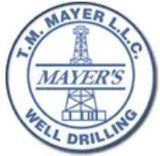FAQs
Mayer's Well Drilling
Have a well-related question? We have the answer. Check out these FAQs and give us a call today for more information!
Does it matter what size pump I install?
In preparation for your well drilling, you'll also need to determine the best pump size for your needs. Pumps are rated in GPM (gallons per minute). A typical three- to four-bedroom home requires eight to 12 GPM. When determining your home water needs, add one GPM for every water fixture in your home. Such fixtures include clothes washers, dishwashers, faucets, refrigerators, showers, and outdoor water spigots.What's the best location for my well?
Consider other nearby properties that have had recent well drilling. Keep the well away from septic drainage fields and animal pens, and look for an absence of large rocks.What determines how deep my well will be?
When planning a well drilling for your home or business, the depth of the well depends on the geology and underground water levels of the area. Household wells usually range from about 100 feet to 500 feet deep, though there are some places where wells can be drilled more than 1,000 feet deep, according to the U.S. Geological Survey. To get that water into your home, a pump is placed inside the well at the right depth so it can bring the water up to the surface.How much water will I get out of my well?
In our experience, a standard well with a six-inch diameter can store 1.5 gallons of water per foot. If you know the depth of the well drilling, the water, and the pump depth level, you can figure out the water storage capacity.I have air in my lines. Now what?
Work in a clockwise manner from the main water supply throughout the house. Open each hot and cold water faucet a half turn to let air and water escape. Repeat this process for toilets, showers, tubs, the washing machine, and the dishwasher. Turning on these fixtures and appliances pulls the air out of the lines. If you need any assistance, contact your local well drilling service.I have bacteria in my well. Now what?
Mark your well with flags or posts to avoid hitting it with vehicles. Keep the well area clear of debris. Maintain minimum isolation distances from contamination sources, such as fertilizers, pesticides, septic systems, and feedlots. Do not tie animals to your well. Have a licensed well contractor seal wells that you no longer use. A well that you no longer use can be a pathway for contaminants to get into groundwater and is a safety hazard.Why do I have low water pressure?
- Too Much Demand on Water: In some homes, having multiple plumbing fixtures on at once can place too high a demand on the water supply for proper water pressure to be maintained in every fixture. With a little coordination, you can usually avoid this issue.
- Faulty Fixtures: Fixtures themselves, such as shower heads or faucets, can become faulty or clogged over time. In some cases, simply cleaning out the screen or aerator is enough to fix the issue, but at other times, an entire fixture may need to be replaced.
- Broken Pressure Regulator: Water pressure regulators are designed to help stabilize water pressure in your home, keeping it within a certain range. When these regulators go bad, your water pressure can either become too high or too low.
- Closed Valves: Your home's water supply can be shut off by two different valves. You can check both of these valves on your own. If either of these valves isn't fully open, it can affect the water pressure throughout your home.
- Clogged Pipes: If pipes become clogged, these blockages can disrupt water flow through your pipes. With the flow disrupted, water pressure will also go down. Pipes need to be cleaned out or replaced to address the issue.
- Plumbing: Clogs can be fixed by cleaning out or replacing small sections of piping. Over time, though, your entire system of piping can become corroded, which can have a negative effect on your water pressure.
Call us for more information about well drilling and maintenance.
What do I need to know before drilling my well?
There are several factors you should consider when choosing the right type of well for your property. Among them is soil type, which makes some wells better than others. Proximity to roads and livestock should also be a consideration. Experts suggest that deeper well drilling projects are superior to the dug well. In our experience, a dug well can get you by, but you never know when it'll dry up, as they're only about 15 to 20 feet deep, which doesn't leave a lot of reserve water. Dug wells only reach the top of the water table, which makes them dependent on the water's height. They can become unreliable or even dry up if the water table's level fluctuates too much.Is my water safe to drink?
Yes, as a private well owner, you're responsible for testing your well to ensure the water is safe to drink. EPA is responsible for making sure that the public water supply within the United States is safe. However, EPA does not monitor or treat private well drinking water. This is generally discussed before your well drilling project begins.What should I do if there's an issue with my water?
Call our well drilling service; our team at Mayer's Well Drilling is here to help!





